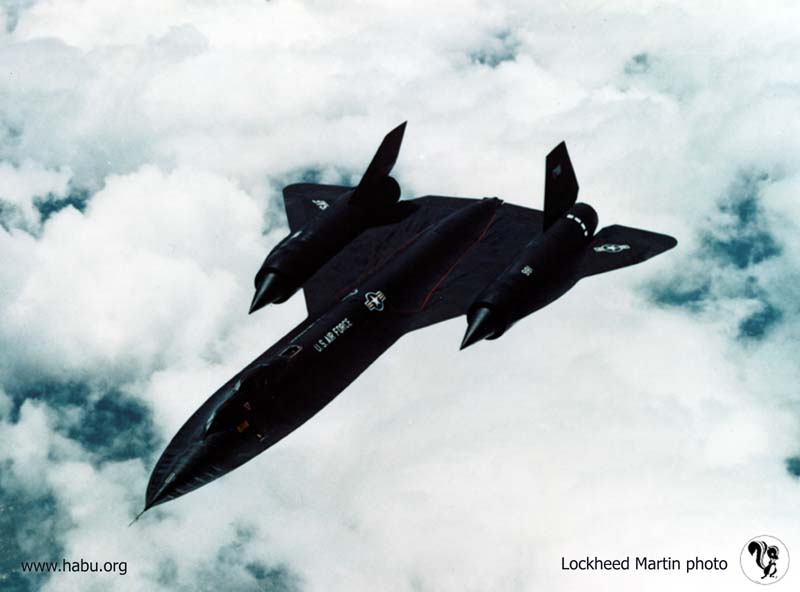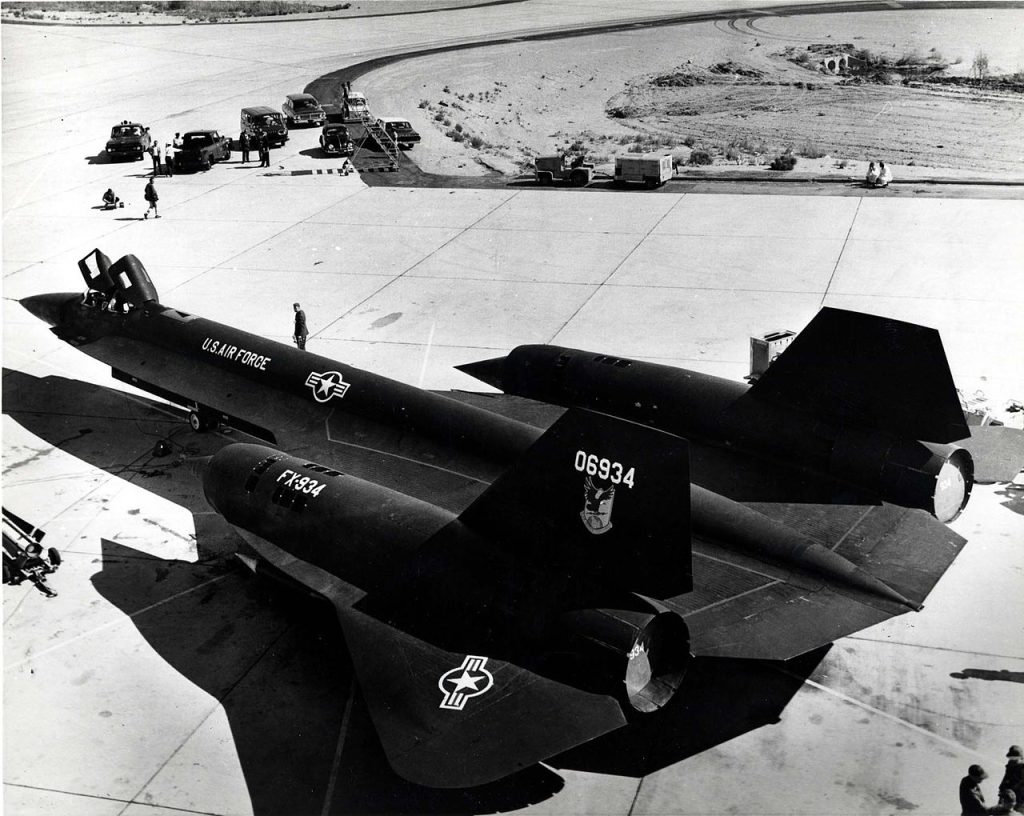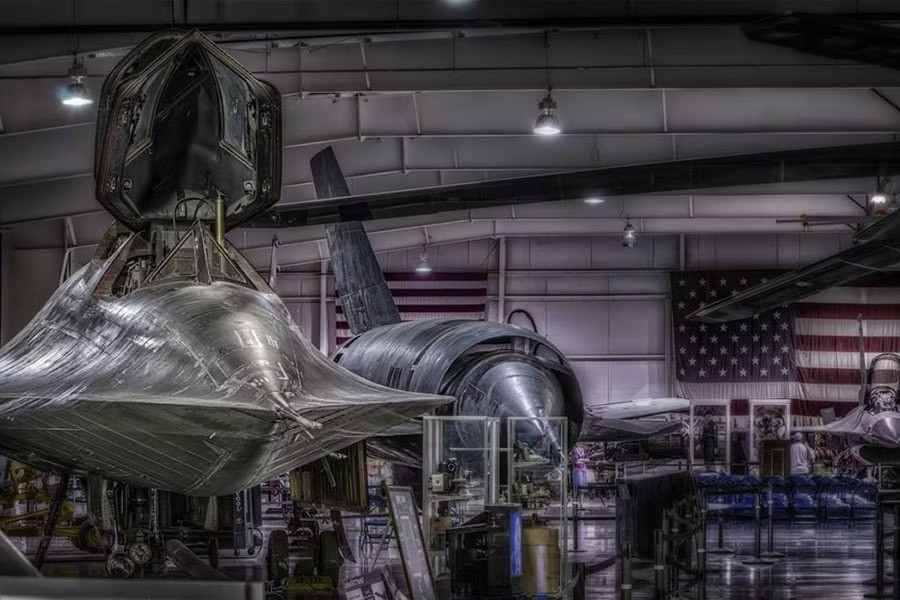For us AvGeeks, the Lockheed SR-71 Blackbird stands as a titan of aviation, a Mach 3 sentinel that pierced the skies at the edge of space. The mystique surrounding the SR-71 is as thick as the California fog, woven with tales of its incredible speed and clandestine missions. But within this legendary fleet, one SR-71 holds a particularly unique, almost Frankensteinian, story: the SR-71C, tail number 61-7981, the only “C” model ever brought into existence.
The Birth of SR-71C: A Blackbird Like No Other
While the SR-71 fleet collectively earned the moniker “Habu,” after the venomous Okinawan snake where many were stationed, 981 carried a less formal, more intriguing nickname: “The Bastard.” This wasn’t a reflection of any inherent mechanical nastiness. Instead, it spoke to the jet’s rather unconventional genesis. Unlike its sleek siblings, 981 wasn’t born whole; it was meticulously crafted from the remnants of two separate airframes. The forward section of this unique SR-71 had never been intended for flight. It was originally an engineering mockup, a static test article designed to endure the immense stresses the SR-71 would face at extreme speeds.

Necessity, the Mother of Invention: Forging a Replacement Trainer
The pivotal moment in 981’s creation came on January 11th, 1968, when one of the only two SR-71B two-seat trainers was lost in a crash. The need for a replacement trainer was critical for the continued operation of the Blackbird program. Faced with a limited supply of airframes, Lockheed engineers at their Palmdale facility made a bold decision: they would fuse the forward static test article with the rear fuselage of the first YF-12A prototype, serial number 60-6934. The YF-12A, a precursor interceptor version of the SR-71, provided the necessary aft section to complete the hybrid aircraft.

Early Flight Quirks: Unraveling the Geometry
When 981 finally took to the skies on March 14th, 1969, piloted by Lockheed test pilots Robert J. Gilliland and Steve Belgeau, it quickly became apparent that this patchwork SR-71 had some… personality. The pilots reported noticeable trim and control issues, subtle hints that the marriage of the two airframes hadn’t resulted in perfect aerodynamic harmony. These quirks became more pronounced when the aircraft was delivered to Edwards Air Force Base (AFB) for the crucial Air Force acceptance testing.

Sorting Out the “Bastard’s” Handling: A Four-Degree Mystery
A team of Air Force test pilots embarked on 16 flights over several weeks, meticulously documenting the SR-71C’s handling characteristics. One persistent problem involved the dynamically variable air intakes and their associated bypass doors, which seemed out of sync. The rudders also required constant trimming, indicating they weren’t in their optimal streamlined positions, leading to increased drag. To diagnose the inlet issue, Lockheed engineers installed a beta (yaw) indicator. However, a perplexing anomaly arose. While the beta indicator showed a four-degree yaw, a high-tech Nomex yaw string, a simple but effective airflow visualization tool, remained perfectly centered, indicating no yaw at all. After considerable head-scratching and brainstorming, the engineers finally pinpointed the culprit: the pitot boom, the crucial instrument that provides airspeed and air pressure data to the flight computers, was misaligned by the same four degrees indicated on the beta. With the flight computers now receiving accurate data, 981 finally behaved like its B-model brethren, flying as “normally” as any SR-71 could be said to fly.

Operational Service and a Unique Role: Training the Blackbird Pilots
Delivered to the 9th Strategic Reconnaissance Wing at Beale AFB in California on September 3rd, 1970, the SR-71C played a vital role in the Blackbird program. Its primary function became training the elite pilots who would go on to fly the SR-71 on its legendary reconnaissance missions. The only significant operational difference between the B and C models was that the “Bastard” had one fewer internal fuel tank, necessitating slightly different in-flight refueling procedures – a minor inconvenience for such a unique aircraft. Its two-seat configuration also made 981 a natural choice for familiarization flights for VIPs, allowing them a rare glimpse into the world of Mach 3 flight. However, even the mighty SR-71 couldn’t solely operate on VIP tours. 981 flew operationally for the last time on April 11th, 1976.

A Relatively Short Flight Life and a Museum Retirement
“The Bastard” accumulated a mere 737.3 flight hours when it was removed from flying status on June 24th, 1976. Interestingly, 180.9 of those hours were on the YF-12A portion of the airframe, flown before its transformation into the SR-71 C. Yet, its unique status as the only SR-71 C ensured its preservation. It remained at Beale AFB as a standby for the B model. In April 1990, the decision was made to enshrine this remarkable SR-71 at the Hill AFB Aerospace Museum. Transporting the Mach 3 icon proved to be a significant undertaking, expertly handled by the 67th Aerial Port Squadron (APS) and the 405th Combat Logistics Support Squadron (CLSS). The SR-71C was carefully disassembled and transported to Hill AFB aboard a C-5A Galaxy airlifter. Air Force Reservists, active-duty personnel, and dedicated volunteers worked for approximately two months to reassemble the Blackbird. On October 16th, 1991, the one-of-a-kind SR-71C was finally towed to its final resting place, a tangible reminder of the ingenuity and dedication that defined the SR-71 program.









